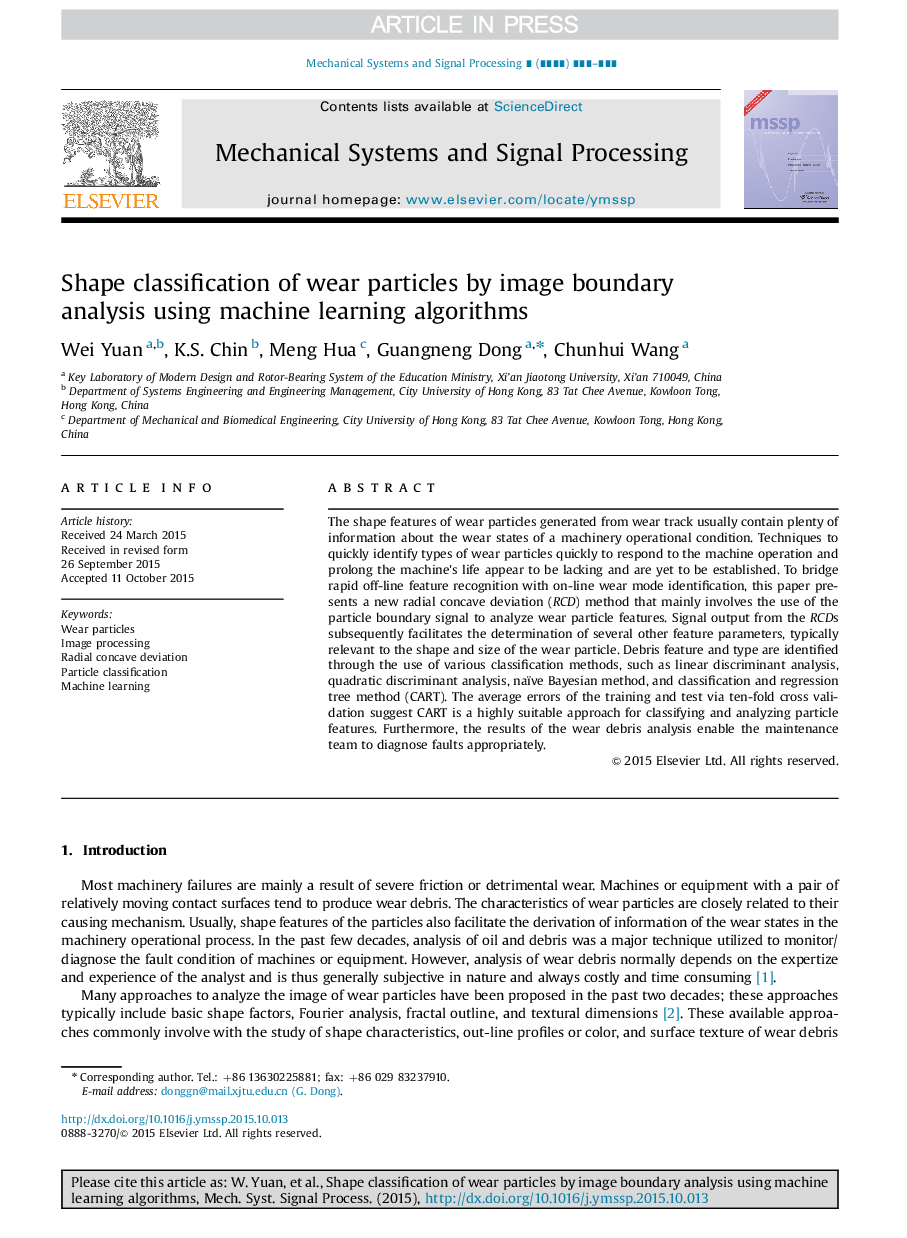| Article ID | Journal | Published Year | Pages | File Type |
|---|---|---|---|---|
| 6955394 | Mechanical Systems and Signal Processing | 2016 | 13 Pages |
Abstract
The shape features of wear particles generated from wear track usually contain plenty of information about the wear states of a machinery operational condition. Techniques to quickly identify types of wear particles quickly to respond to the machine operation and prolong the machine׳s life appear to be lacking and are yet to be established. To bridge rapid off-line feature recognition with on-line wear mode identification, this paper presents a new radial concave deviation (RCD) method that mainly involves the use of the particle boundary signal to analyze wear particle features. Signal output from the RCDs subsequently facilitates the determination of several other feature parameters, typically relevant to the shape and size of the wear particle. Debris feature and type are identified through the use of various classification methods, such as linear discriminant analysis, quadratic discriminant analysis, naïve Bayesian method, and classification and regression tree method (CART). The average errors of the training and test via ten-fold cross validation suggest CART is a highly suitable approach for classifying and analyzing particle features. Furthermore, the results of the wear debris analysis enable the maintenance team to diagnose faults appropriately.
Related Topics
Physical Sciences and Engineering
Computer Science
Signal Processing
Authors
Wei Yuan, K.S. Chin, Meng Hua, Guangneng Dong, Chunhui Wang,
